Unusual Shrinkage
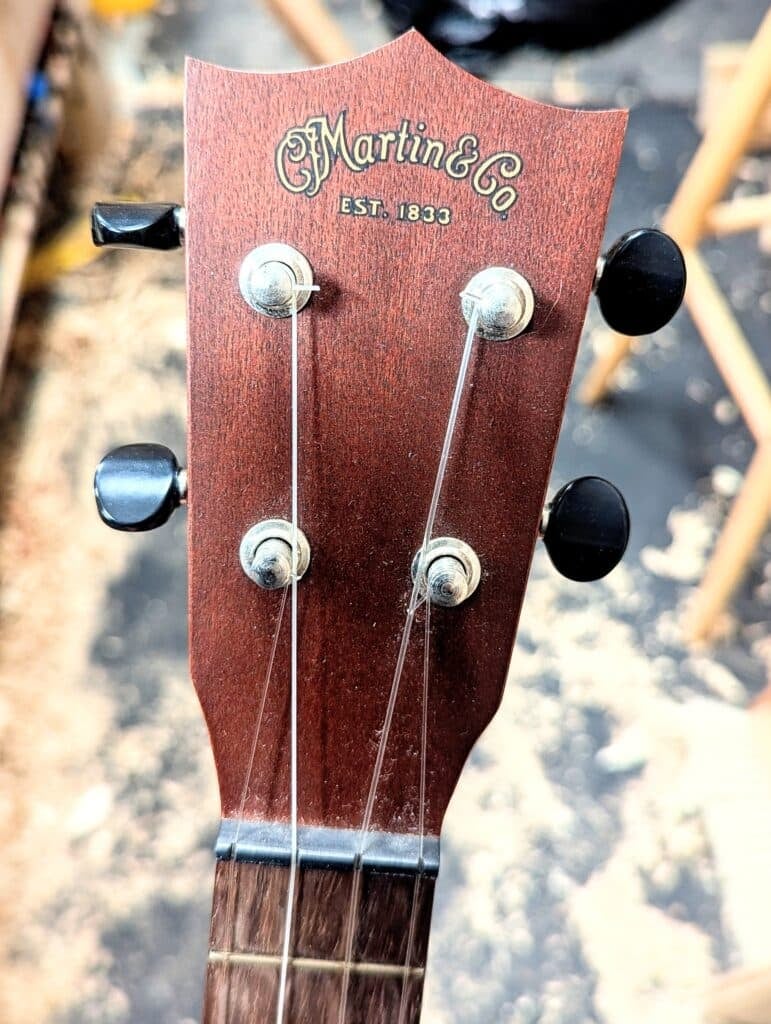
Considering Britain’s weather and the reputation for rain that is far from true, you might think an instrument made in Pennsylvania decades ago that was bought secondhand in Hawaii would not have a problem in the UK. Not so! A friend asked me to look at his Ukelele because the binding had come away front and back. It’s a nice Martin & Co. made in Nazareth, Pennsylvania, USA from mahogany. Plucking the strings reminded me of different Ukelele players going from George Formby back in the mid-1900s to Israel Kamakawowo’ol and his “Somewhere over the Rainbow” ukelele strumming fame.
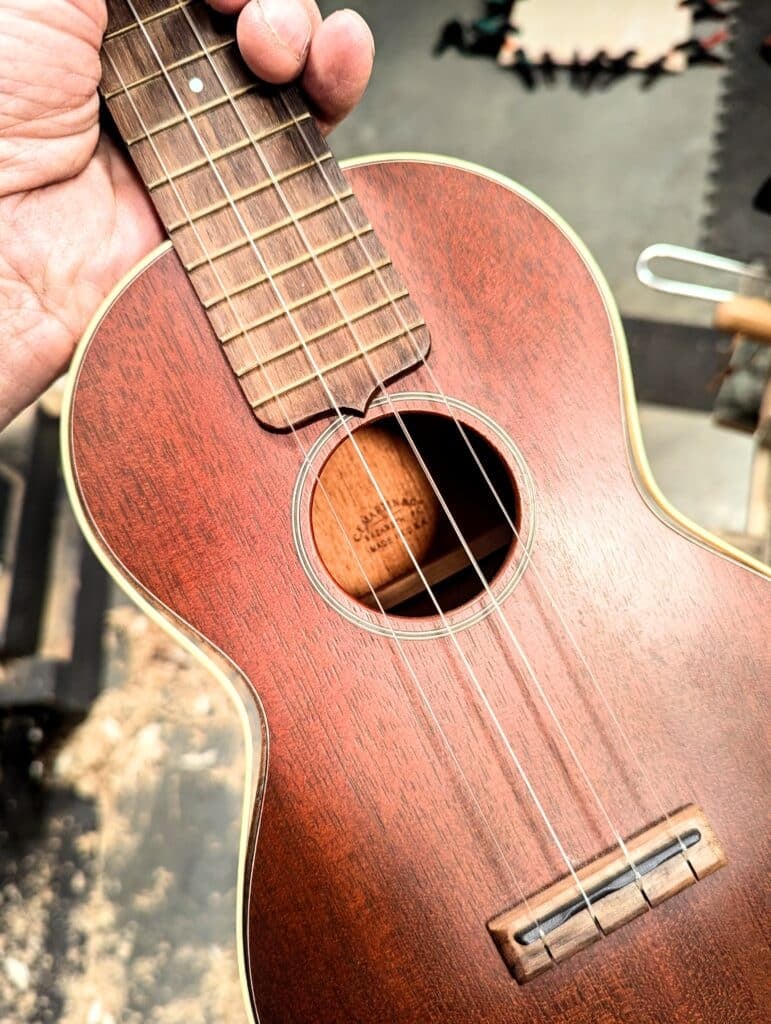
I’m sure the maker never anticipated this happening to so small an instrument. I wish that I had the original pattern for comparison. It would be interesting to see the difference between then and now.
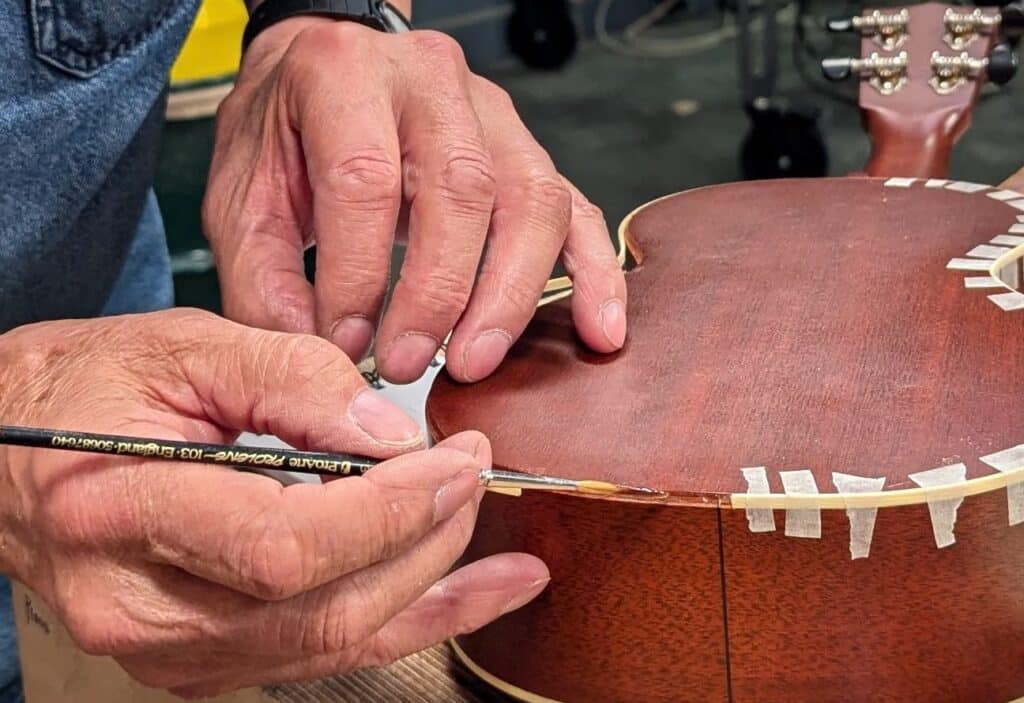
On the back of the instrument the makers used a single piece binding that met at the bottom with the two ends butted up against one another, I assume centred on the centreline. Once the binding was popped off and repositioned, it was 5mm too short of any ‘meet and greet’. I filled the gap with cocobolo for contrast rather than trying to match the binding colour.
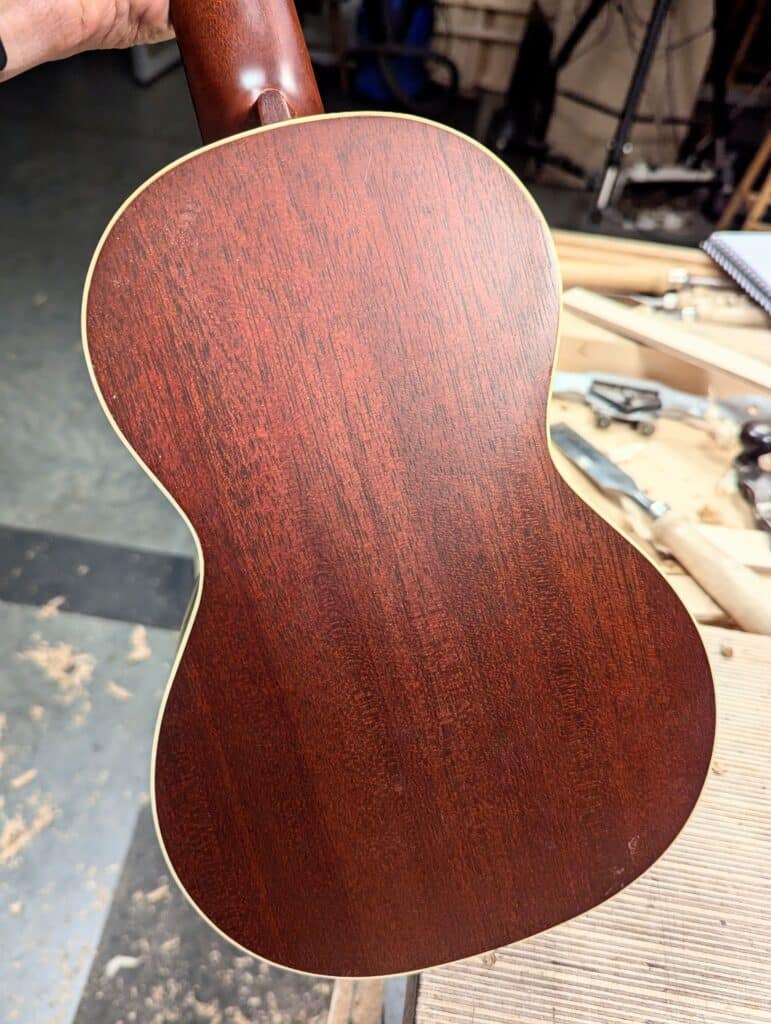
The binding did not turn loose at the top where the neck connects to the top of the body as the heel of the neck tied it in place and prevented separation . . .
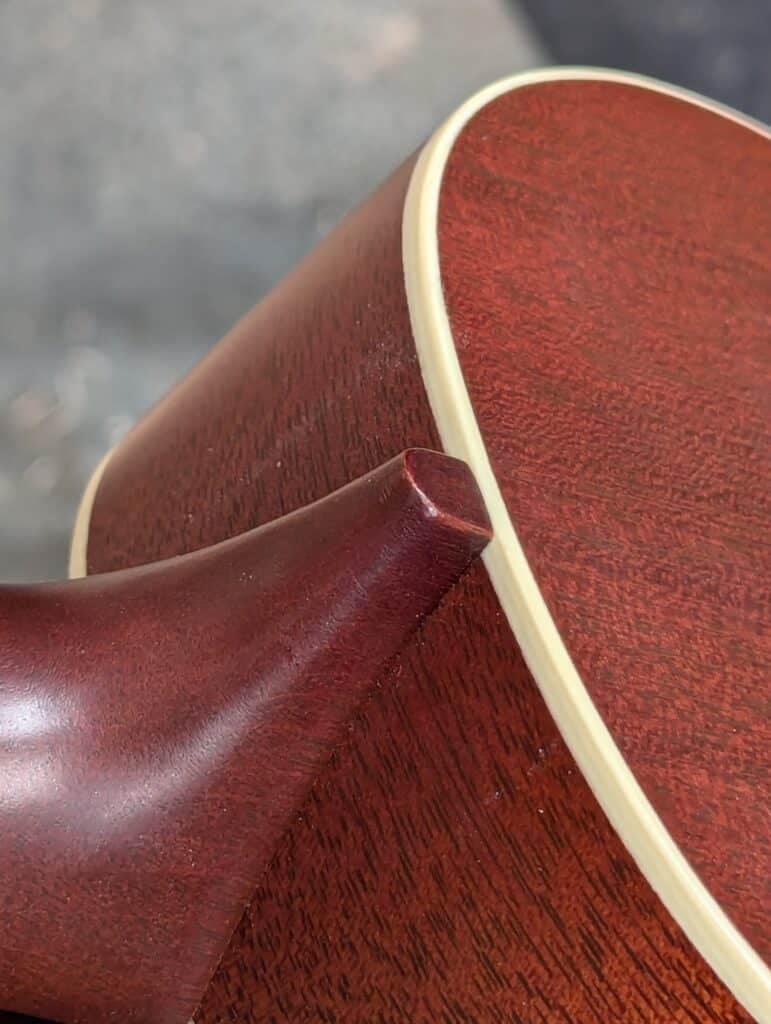
. . . that being so, I worked from either side down to the bottom. Funnily enough, the binding was not centred which suggested that the shrinkage of the body front and back was uneven with greater shrinkage on one side than the other. Several things could cause that.
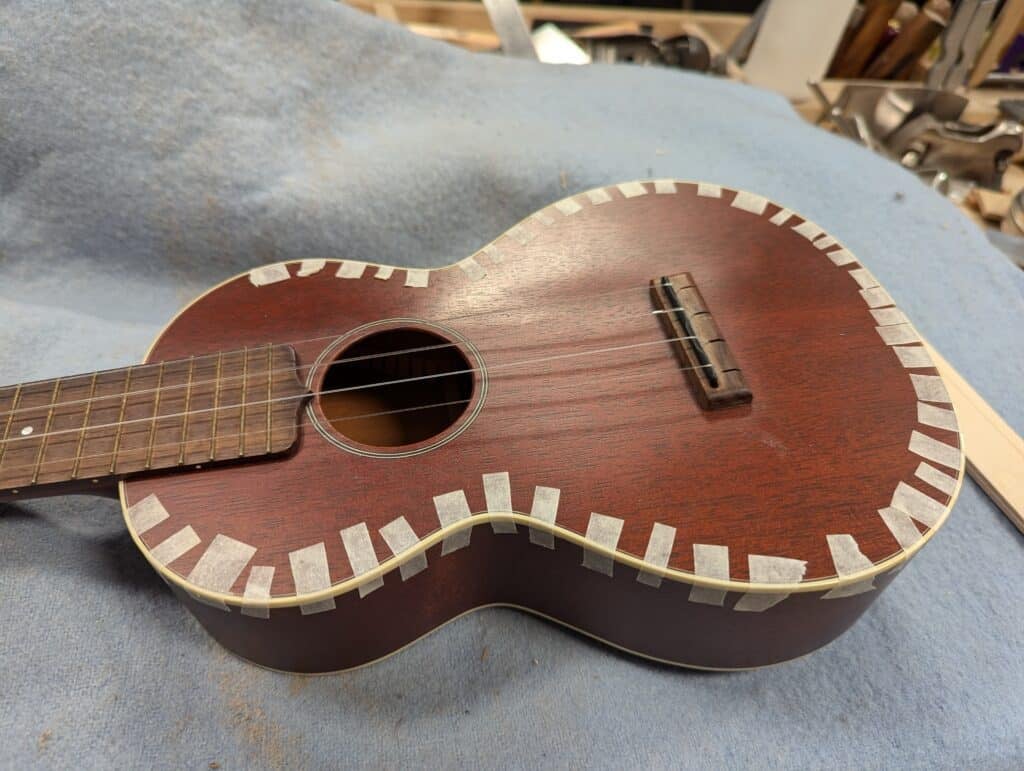
The tabs needed to be in place for about six hours until the glue reached the final bond. I left it overnight to ensure a full cure of the glue. The original joint line is under the fingerplate and that was not worth removing for so small a repair so I cut the binding at the bottom and centred on the instrument’s lower bout. I used a modeller’s fine-toothed saw for this.
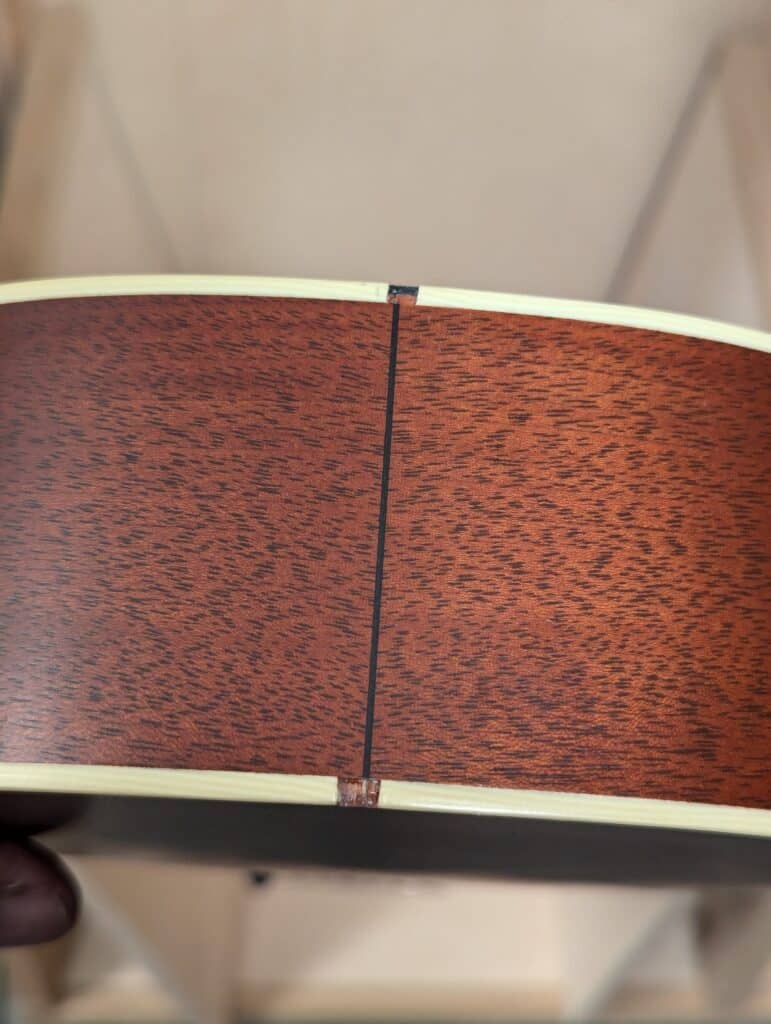
You can see that although I did centre my cut in the black centreline it came out unevenly and that is because the shrinkage was uneven on the bouts. The one on the front plate, the top of the picture, was already uneven and so shows the same cause.
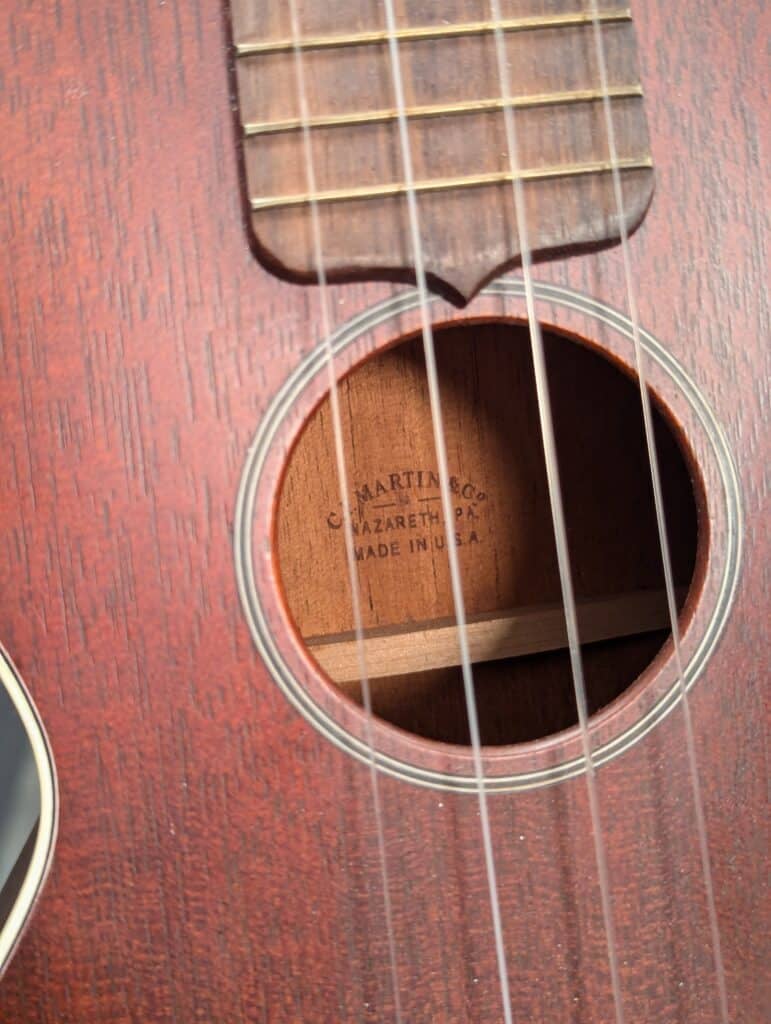
I trimmed the binding to equal out the unequal lengths on each side of the centreline which left a 7mm gap to receive the cocobolo I glued in place with hide glue. Once dry, I used a small chisel to level the insets to eliminate abrading that would have required repair to the finish.
I slightly oversized the infil pieces so that once inserted they protruded on the two exposed faces. This meant I could trim down after the glue had dried and the pieces were solid.
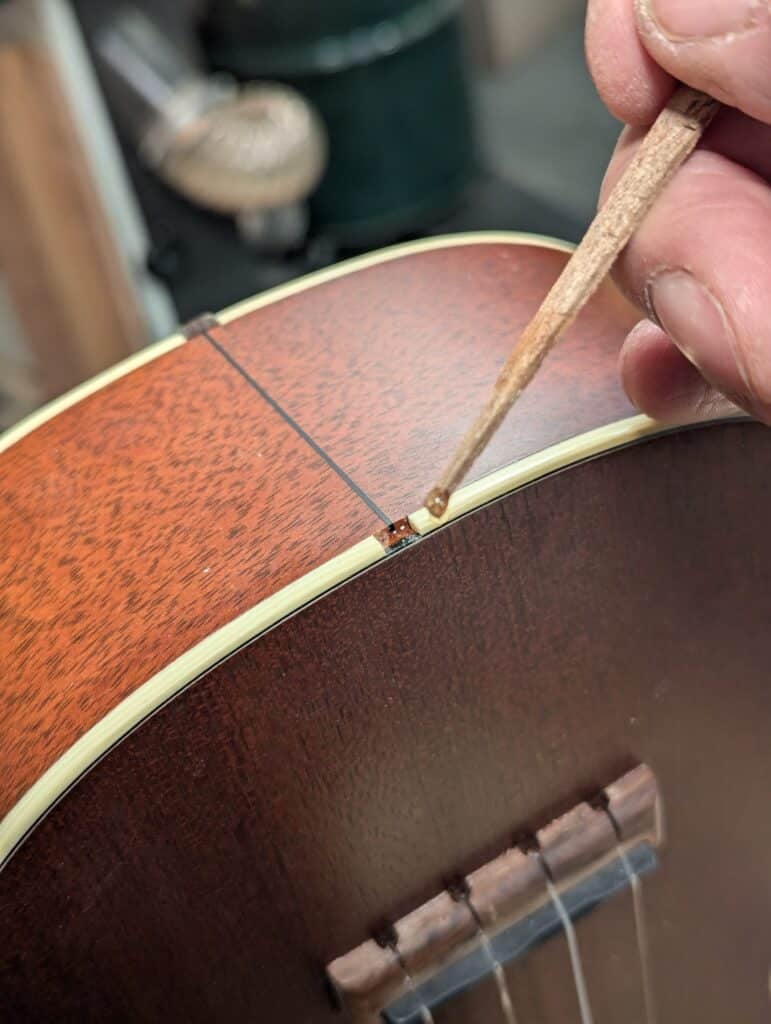
I glued the small pieces in place and taped them down by stretching the tape across the corner and pulling it so that it stretched. This gives the pulling power needed to apply adequate pressure.
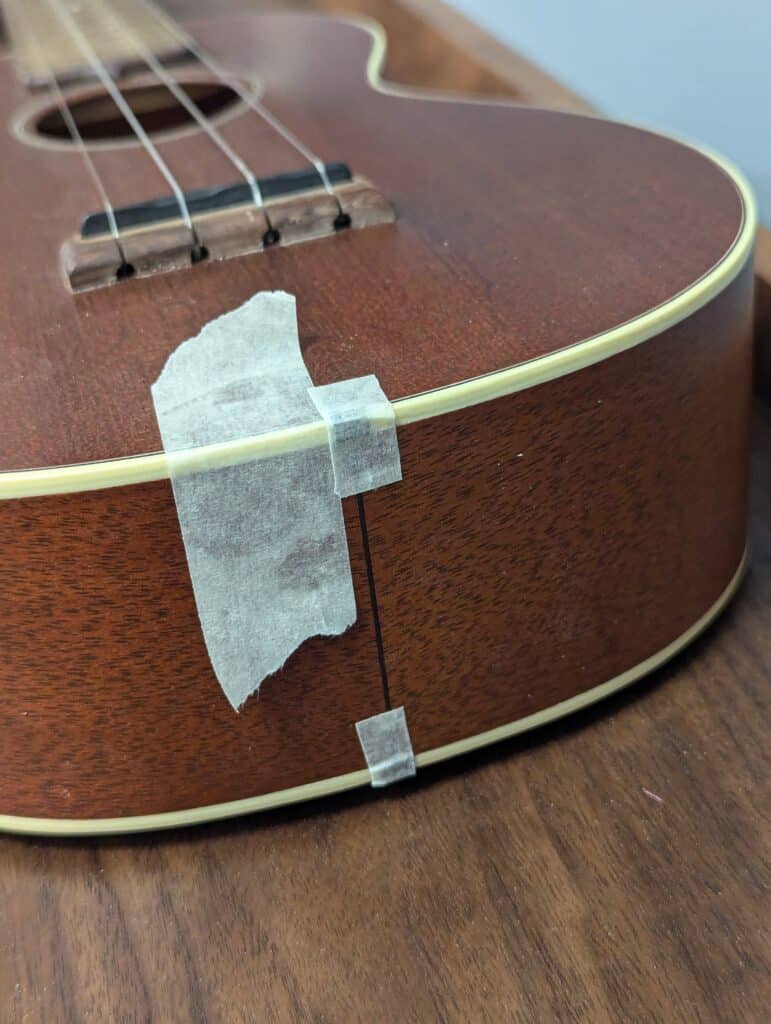
Once dried, I carefully trimmed down any excess taking care to approach the final levels without marring the surrounding surfaces. I didn’t want to have to match the finish or treat a larger area after the completed repair was done if I could help it.
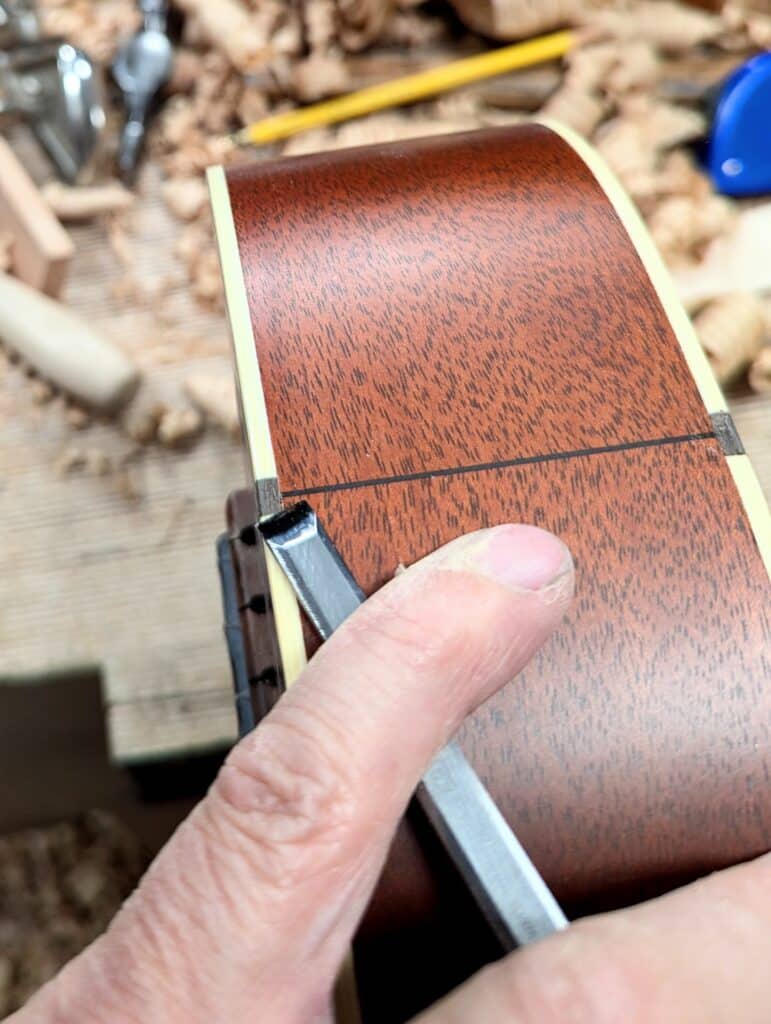
The end result is a playable Ukelele again.
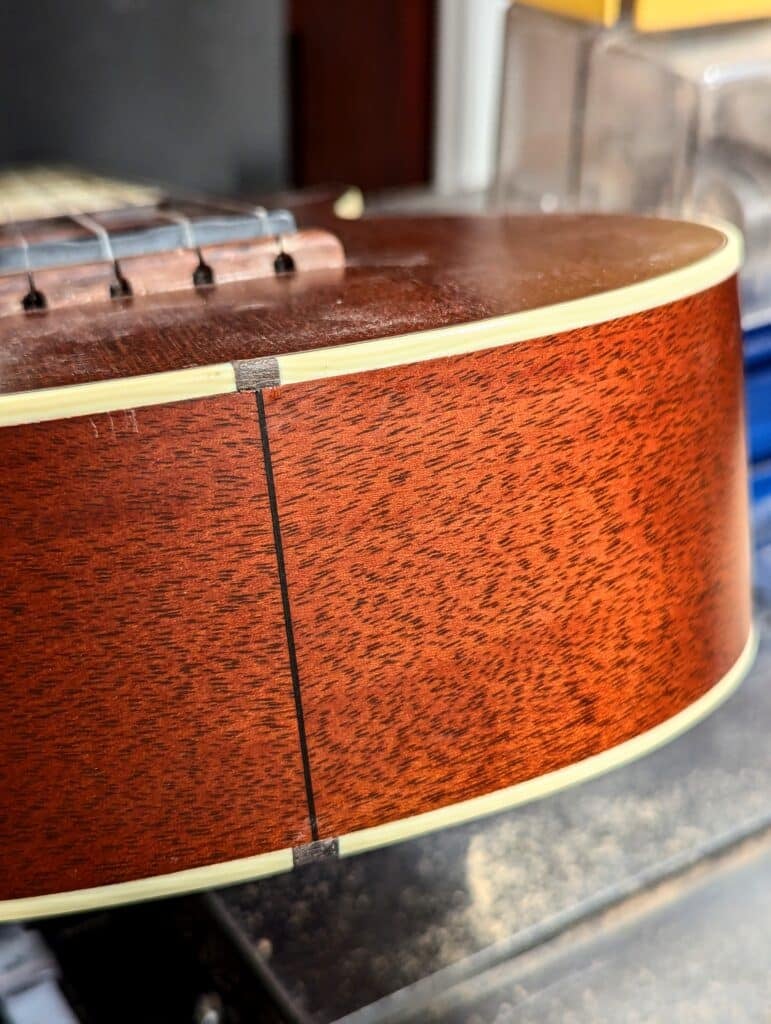


What a lovely repair for a pretty instrument. Thank you for walking us through it. 🙂
Yes thakn you Paul for showing us details of just how a master craftsman makes such a repair. It makes me regret not buying the cheap, exceptionally good quality but broken guitar I saw at a car boot sale a few years ago! In hindsight I think I possibly could have repaired it, or at least salvaged parts of it ( e.g. high end machine heads) but I knew my wife would not accept another guitar in the house (or garage), even if only for repair and resale! 😀
Your article also reminded me of the cute, old, light, dining-type chair which I bought broken from a couple in our village who were emigrating to NZ or Oz, I forget which. The husband had intended to fix the chair but had never got round to it. The damage was somewhat worse than it first appeared 🙁 but eventually (after more than 10 years! 🙁 ) I fixed it, mainly with traditional warm hide glue and a smidgeon of super glue to fill a couple of key cracks, and using several of my PS-style-modified cramps 🙂 to hold it all together while the glue set, overnight. 🙂
During testing the delicate looking chair fully supported my rather considerable weight at the time (18st+ 🙁 but now <14st again 🙂 ). We don't sit on the rather pretty but delicate chair now though (but we could!), we place things on it instead. 😀
Indeed it is the shrinkage of the binding-material not the wood, which caused the defect.
I got this information from the C. F. Martin company. They used something like celluloid in these years. I had the same problem with one of my Martin guitars.
Best regards from Germany, Thomas
I agree. The celluloid wasn’t the most stable material. If I remember correctly from my guitar playing days, the celluloid was responsible for causing more than one fire under certain circumstances. .
The close-up pictures show amazing grace and beauty in this little instrument. Woodworking of this type is a whole different world from what I’m used to. Taking the time to study this piece is like stopping to smell the roses 🙂
Earlier this month I received my Martin guitar back from the company after they repaired this exact issue under warranty. Glad to see I can do it myself if needed. Thanks
As I was reading this, several questions came to mind. Can you please explain why did you use cocobolo (which I had to research because never heard of it) and not other more known wood used in our everyday, more common to find (walnut,etc.)?
And also, why did you use hide glue and not the regular PVA white glue that you use on your masterclass projects?
I didn’t understand why was the binding too short, because if there was a shrinkage in the body of the ukelele made lf mahogany, shouldn’t the binding be a little too oversized instead?
Thank you
It turns out that, according to a commenter, the maker stated it was the binding that shrank. I had a small piece of cocbolo right there by my bench. Some hardwoods, like cocbolo, have oils that can be buffed to a nice satin finish with a soft cloth or brush and in this case needed no finish applying to it. An much easier fix. Hide glue is reversible and on stringed and bowed instruments that helps if you ever have to take a part off.
Thanks Paul…I am both a woodworker and a ukulele player. I love watching luthiers work their craft, combining two of my favourite activities. Good call on the hide glue…the more reversible the repair the better: future players and luthiers will thank you.
PVA & hide glue are the wrong glue to use when attaching celluloid, ABS or Bolatron (the binding used by CF Martin for over 40 yrs) should use StewMac All Bind, Duco model glue,titebond polyurethane glue or use acetone
Thank you Paul for sharing this repair with the excellent photos. Lovely work.
Cheers,
Michael
Tone,
If you now regret buying a junk guitar to learn how to work on one, you might consider making a cigar box guitar. There are lots of videos out there showing how to do it, and they can be very simple or as elegant as you like. You will learn how to install frets, set action, all sorts of stuff. I made one and couldn’t stop. I’m on my 84th now, about half are ukuleles.
Thanks Mark. 🙂 But I think the increasing world supply of decent guitars now exceeds diminishing demand for them. Unlike when I was young. With that mindset, repairing appeals to me more!
Martin is famous for binding shrinking and pulling away! “Got to store your guitar at all times in its case!!” Then “ what did u expect? The off gassing of the nitrocellulose gets TRAPPED IN THE CASE…” . Martin makes the guitar I hear in my head, I wish they didn’t! lol